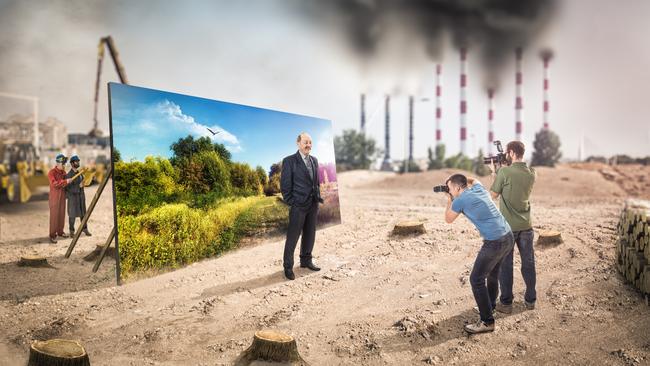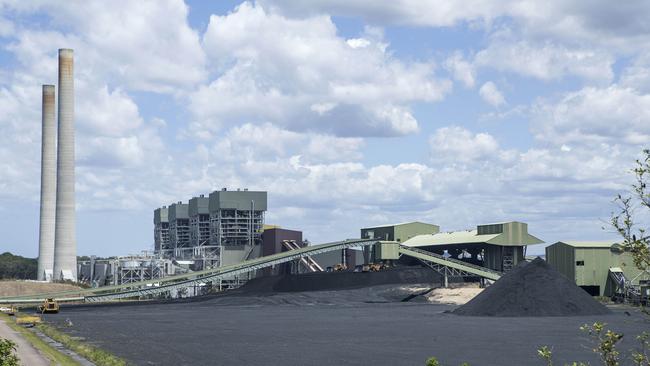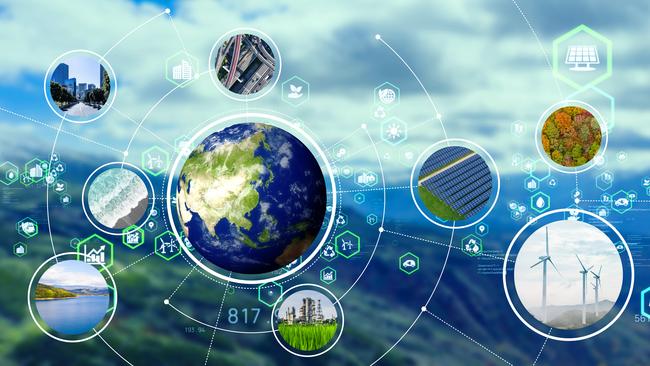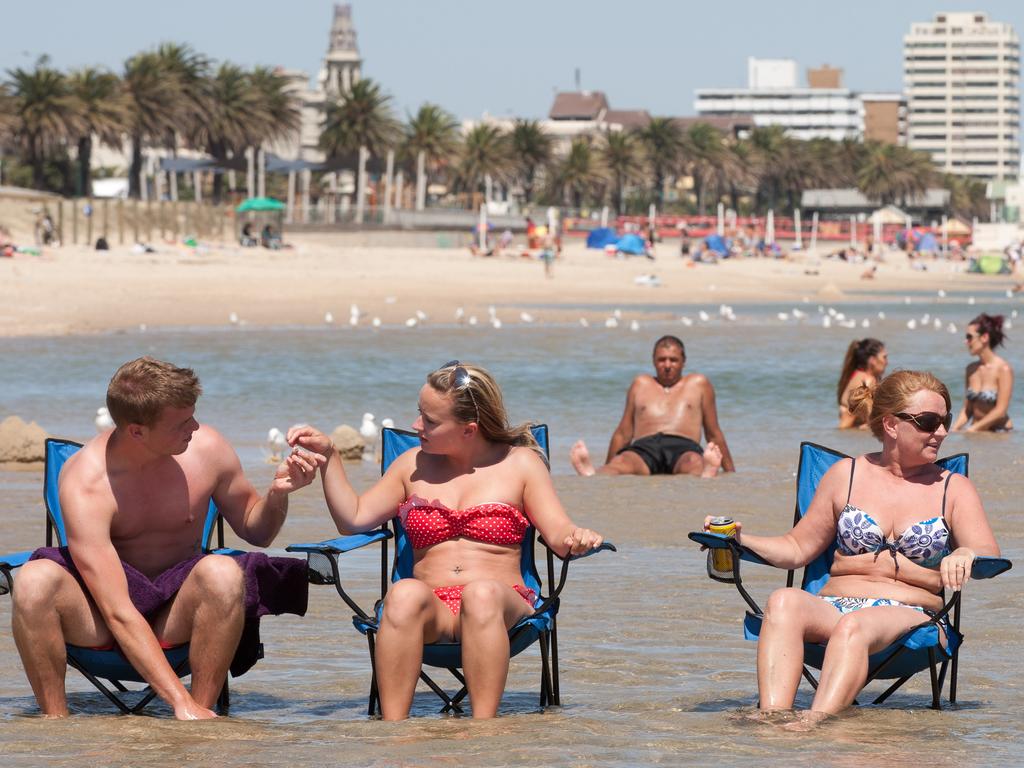Dealing with an uneasy shift of power
As the drawbacks of renewables hit home worldwide, Australia faces its own light-bulb moment.

“These guys were well ahead of their time,” El Safty says.
“They had solar panels on homes and forklift batteries to store the power. But we nearly missed our flight out of Albuquerque because the alarm clock didn’t go off because we ran out of batteries. That was the light-bulb moment for me that we need energy storage to enable all these renewables to happen.”
Through his company Zero Emissions Developments, El Safty, a former petroleum engineer with Caltex and CSR, has pioneered development of a new type of battery that lasts more than twice as long as lithium ion batteries and is fully recyclable.
But the light-bulb moment that sparked El Safty to action is now being felt on a much bigger scale right around the world.
Britain is in the grip of an energy crisis that threatens to spark a public revolt and claim the scalp of Prime Minister Boris Johnson. Germany has the world’s highest electricity prices largely due to green policies that have been unable to deliver stable power, resulting in a rush back to coal. US President Joe Biden is considering suspending federal petrol taxes until January next year, fearful of the impact of rising fuel prices on the midterm elections in November this year.
Energy authorities say Australia has had an early warning of disruption from intermittent renewable energy in South Australia. The same lesson was learned in the US states of Texas and California, and has since crippled energy markets across Europe because of a widespread shortage of wind in the northern summer.
Confirmation this month that major coal-fired power stations will shut early in NSW and Victoria highlights the high stakes that are being waged in the energy transition.
AGL says it will bring forward the closure of the Loy Yang B power plant in Victoria’s Latrobe Valley and the Bayswater power plant in the NSW Hunter Valley. Combined, these two power stations are responsible for 8 per cent of power supplied to the national electricity grid. On Thursday, Origin Energy confirmed it would bring forward the closure of the Eraring power plant, also in the Hunter Valley, by seven years to mid-2025.

The early closure of the power plants is not totally unexpected but it throws into chaos the planning of the electricity grid transition. Federal Energy Minister Angus Taylor warns the closures could lead to a supply crunch and more expensive power bills and a less stable grid.
This is the challenge for the green entrepreneurs to solve. Unless they are able to do so the public appetite for a green transition is likely to evaporate at large political cost. The challenge for policymakers is to not allow the corporate sector to use the green transition to lift profits at the public expense.
Along with the announced closure of Eraring, Origin says it will build a big battery system of up to 700 megawatts of capacity. NSW Energy Minister Matt Kean says the NSW government will support the construction of an additional big battery on the Central Coast, the Waratah Super Battery, with 700MW/1400 megawatt hours of storage capacity that is expected to come online by 2025.
On Tuesday, the NSW government said it had received expressions of interest in $100bn of renewable energy and storage projects in its Hunter Valley renewable energy zone. These included 24 solar projects, 13 onshore and seven offshore wind projects. This was joined by eight pumped hydro energy storage projects and proposals for 35 big batteries.
For stable power, the critical ingredients are dispatchable power, including gas, and storage.
In a briefing note issued on Thursday, Energy Networks Australia – the national industry body representing Australia’s electricity transmission and distribution and gas distribution networks – laid out the challenge, and how what is happening in other parts of the world is relevant for Australia. “Increases in energy supply charges across the UK are cause for concern as almost 22 million households will see an average increase on their energy bill of 54 per cent from April 2022,” ENA says.
Largely, the increase is driven by a rise in global gas prices across the past six months. ENA says wholesale gas prices have quadrupled in the past year because of a colder than average winter putting pressure on demand.
This has been driven in part by a fairly windless few months across Europe, which has meant a lack of dispatchable renewable wind power. The lack of wind has been given its own name: dunkelflaute – a German word that means dark doldrums or dark lull.
“Whether you’ve heard of it or not, dunkelflaute is a challenge our energy systems will need to manage,” the Australian group says.
“It describes events where there is minimal or no sunshine and wind for extended periods, usually occurring during winter.” In Australia, this has been referred to as a renewable drought.

“A recent lull in wind generation in South Australia is a small-scale snapshot of what could become a much larger problem in future,” ENA warns.
Data from the Australian Energy Market Operator shows across June 11-12 last year wind power generated fewer than 4800MWh of the 55,000MWh total demand, only 8.7 per cent of total generation. This is compared with June 9-10 when wind power generated 46,000MWh out of a total demand of 73,000MWh, contributing 63 per cent to generation.
Wild fluctuations such as these have played havoc with the economics of coal-fired plants, which were built to run continuously.
In a special report on the dunkelflaute phenomena, ENA says there are few obvious answers.
It says batteries tend to be best suited to managing hourly fluctuations across the day, charging from the midday sun and then discharging to help with the evening peak: “Today’s batteries are not well placed to manage longer durations, with most having less than four hours of storage.”
This is the case with the batteries announced to replace Eraring.
There are three current options to completely decarbonise the electricity grid.
The first is to build a diverse renewable generation fleet all across the country in hopes that the wind is blowing or sun is shining somewhere, while ensuring sufficient interconnection to transport large quantities of electricity all across the country.
ENA says this will result in a large amount of electricity being wasted, along with lowering the efficiency of interconnections between states, while still leaving room for dunkelflaute in severe cases.
The second option is building deep storage, such as pumped hydro, but ENA warns this type of deep storage solution is likely to sit idle most of the time and can be challenging to finance.
“Developing this much deep storage is likely to be incredibly costly and unlikely to be in customer’s best interests,” ENA says.
The group says the third and most promising option is building zero-emissions dispatchable energy, consisting of renewable gas usage in gas-powered generation plants.
This is the route being followed by many of the projects bidding to build in the renewable energy zones planned by state governments, but it will require proving the economics of producing hydrogen from excess renewable capacity at scale.
Another alternative for zero-emissions dispatchable power, not being considered in Australia, is nuclear.
Nuclear would face the same problems as coal in that to maximise the return on investment they should run continuously rather than plug the gaps of wind and solar. The other side is that with sufficient emissions-free nuclear there would be less need for wind or solar power.
The smart money is on advances in fusion reactor technologies, which have experienced some big breakthroughs in recent months but are still many years away from commercialisation.
Given the problems of intermittency in Europe, France and Britain have committed to the construction of a new fleet of nuclear power stations while nuclear and gas have been given the go-ahead for green investment by the EU.

Acceleration of the withdrawal of coal-fired power plants in Australia will make the debate more real.
As a first measure, governments will likely be forced to follow the example of Britain with capacity payments, where dispatchable sources of electricity are paid to be on standby.
Longer term, much will depend on further advances in storage technologies and the appetite of business and households to have electricity supplies restricted in times of peak demand or low supply.
For a snapshot of what happens if things go wrong, look no further than a clutch of international headlines from recent days: “The Great Climate Backslide: How governments are backtracking worldwide” (Bloomberg); “Europe’s Net-Zero Carbon crack-up begins ahead of schedule” (The Wall Street Journal); “China to increase coal-fired power capacity by 10 per cent in the next 5 years” (Reuters); and “Welcome to Net Zero: Poorer families face threat of peak hours electricity rationing under the drive to go green” (The Daily Mail).
Governments that have become addicted to the politics of climate change are under increasing pressure.
But as The Wall Street Journal columnist Joseph C. Sternberg writes, it may be too late to retreat.
“Recent years have seen a concerted effort by climate activists and various enthusiastic enablers in the financial world to co-opt private capital in pursuit of green aims. Hence the rise of so-called ESG investing – the E standing for environmental,” Sternberg says.
“Politicians in their more foolish moments have been happy to help, as with efforts to embed such principles in financial regulation.
“The politicians’ challenge is to wrest well-functioning energy and financial markets back from a financial, activist and media class that seems unshaken by the anti-consumption, income-redistribution miseries their agenda is inflicting.”
It is easy to see parallels with what is happening in Australia, where the renewable energy rollout is set to kicked into another gear. The green transition is blessed with great minds and good intentions but it will require governments to stand firmly on the side of consumers.








It was on a trip to the Earthship alternative-building community in Taos, New Mexico, in 1995 that Australian battery maker Ahmed El Safty learnt first-hand the shortcomings of renewable energy. An off-grid community that has pioneered development of self-sustaining buildings made from waste tyres and rubbish, Earthships and their founder, Mike Reynolds, have a cult following around the world.